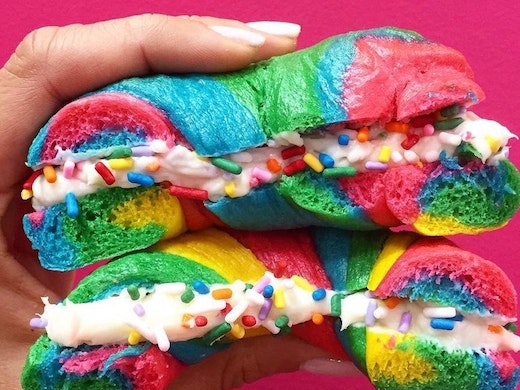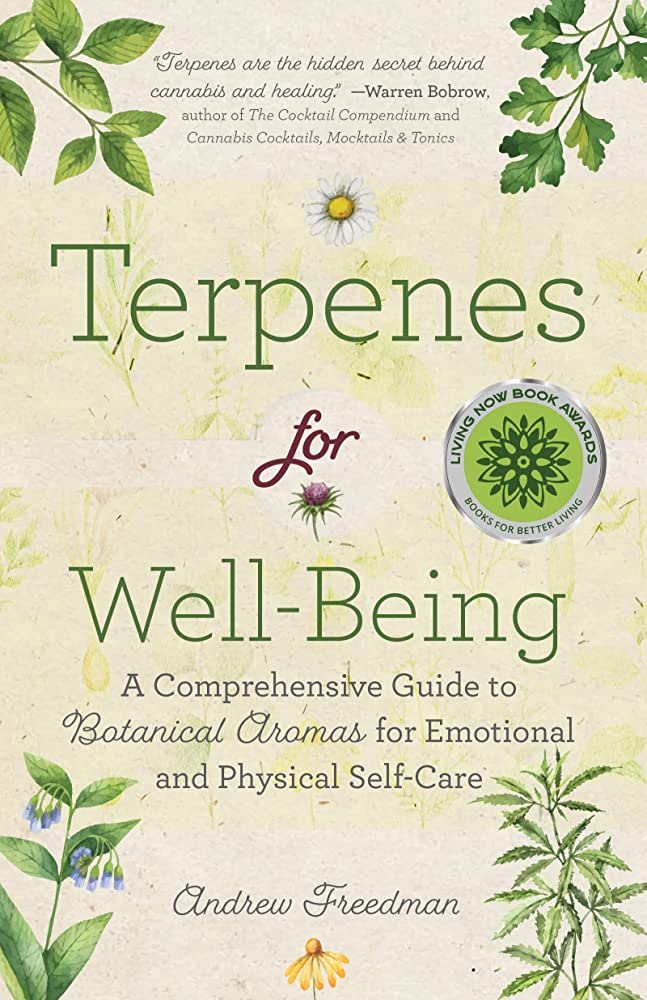
Broad spectrum vs. full spectrum: Which is the best? Each can offer you different benefits, even though they contain the same amount THC. You should learn all about the differences before you decide on a CBD product.
It might seem like the logical choice to select a full spectrum product. But that's not always the case. Because some employers or other businesses might not allow you use hemp-derived products at work, this is because There are stricter regulations in some states regarding cannabis use than others. In such instances, it might not be wiser to purchase a full spectrum product and instead opt for a more simplified distillate. It is best to inquire at your local retailer or dispensary.
You also have the choice of full-spectrum or bioactives-infused distillates. While distillate may help you get the most out of the CBD you buy, it is more expensive.

While a product may claim to be full spectrum, the distillate will most likely only contain THC. However, you can also get a distillate with terpenes. You may get a better result by adding terpenes or CBD isolate to your distillate than you would with THC alone.
A distillate is preferred by some people over full-spectrum products, but you won’t get the entourage effect from a full spectrum product. Full-spectrum products contain a wide range of cannabinoids. Some of these may have psychoactive properties. If you don't want to be tested positive for marijuana, a distillate might work. But, if your goal is to get the maximum benefit, a full-spectrum extraction may be the best option.
Another advantage of a full-spectrum extract is that it may contain the most effective cannabinoid. Full-spectrum CBD is more complex than CBD isolate. This means that they are more likely give you the entourage effect and other health benefits. They're also cheaper and less well-regulated, so there won't be any problems with getting caught.
When you are searching for CBD products that work, it is crucial to be familiar with the different types and their benefits. You don't want to buy the wrong type, because you could end up wasting your money. It's difficult to determine which type of product is best for your needs with so many choices.

If you're looking for CBD products, it is essential that you carefully read the labels. This will let you know exactly what you are buying. The label may contain information about each type of product. You should also consider your lifestyle and needs. No matter what product type you choose, it is important that you find something that you can use and enjoy.
FAQ
Is the CBD industry on the rise?
Yes! And this growth is expected to continue into the future as legalization spreads across North America. Canada was the first country to legalize recreational cannabis use. Several states also have medical marijuana laws.
This trend is expected to continue for at most another decade, as more states pass legislation that allows access to medical marijuana.
The legalization of marijuana also makes sense from an economic perspective. Legalizing pot can provide many benefits, not only for farmers but also for the general public.
It could reduce crime rates, by decreasing illegal drug availability. It could also provide a source of tax revenue for governments.
People may choose to drink less alcohol as legal marijuana becomes more popular. This would reduce the likelihood of having hangovers. It also means lower healthcare costs.
For chronic pain patients, marijuana may even improve quality of their lives. Many believe THC, the active component in marijuana, is responsible for relieving symptoms like muscle spasms or nausea that can be caused by chemotherapy.
Perhaps marijuana can be used as a treatment for mental illnesses like anxiety and depression. Some studies have shown that marijuana can treat schizophrenia.
Even though the CBD sector looks bright, there are still many challenges.
What are some common blunders that companies make when they venture into the US cannabinoid markets?
Not understanding the regulations for cannabis products is a first mistake. This could cause you to have to modify the formulation of your product.
Another mistake is not being able to correctly label your product. You must know whether your product contains CBD, THC, or both.
Thirdly, you should understand how to package your product correctly. If your product contains THC you should ensure that it's packaged in child-resistant containers.
If your product is not containing THC, then it's important to follow all packaging regulations. There are many states that cannabidiol or CBD is legal.
Finally, you should always keep track of any recalls on your products. If there is a problem with your product, it is important that you inform customers as quickly as possible.
Is there a saturation in the CBD market?
CBD industry is growing at over 25% per annum. This growth is expected not to stop for at least five more years. In fact, the industry is expected grow from $2Billion today and $5Billion by 2020.
The CBD market is currently dominated by two companies - GW Pharmaceuticals and Canndoc Ltd. Both companies have a focus on creating pharmaceutical-grade products. However, they have not been very successful thus far. Both of them are having difficulty gaining traction in today's marketplace.
Cannabidiol is an extract of cannabis with less than 0.3% CBD. It doesn't produce any psychoactive effects. It can be used to treat epilepsy, and other medical conditions. It is also used to supplement a diet.
There are many different types of CBD products available. Some CBD products can be made with whole plant extracts and others, such as CBD.
These products all have one thing in common: they contain low amounts of THC.
These products are legal under US federal law. This doesn't mean you shouldn't follow local laws when selling CBD-related products. Check with your state regarding the sale of CBD products.
Additionally, CBD products in some states are illegal. These include California, Colorado, Florida, Mississippi, Missouri, New York, North Carolina, Ohio, Oklahoma, Oregon, Pennsylvania, Rhode Island, South Dakota, Texas, Utah, Virginia, Washington, and Wisconsin.
CBD products shouldn't be used if you live in any of these states.
Where can I purchase CBD products?
CBD can be bought online or at your local retailer. Online retailers offer better deals. Many websites offer CBD products that are made from industrial hemp. This product contains less than 0.3% THC.
If you prefer shopping locally, consider brick-and mortar businesses that are focused on CBD products.
Many states allow CBD products to legally be bought without prescription. You may be able buy CBD products from your local pharmacy if you are a resident of one of these states.
CBD products could even be delivered to your home.
How does the price of CBD vary across different states?
Prices for CBD products can vary depending on where you live. In fact, prices can differ by more than ten times!
The general rule of thumb is that prices rise the farther north you travel. In Alaska, CBD is $35 per gram on average, while it costs $200 in Hawaii.
This trend is evident throughout the country. Prices range from $5 to over $2,500 per gram.
Why is it happening?
One reason why prices vary so much is because of the varying levels of regulation. Some states require that all CBD products contain very little THC (the psychoactive component of marijuana). Others do not care about the level of THC.
Some companies may choose to sell their products first in one state before shipping them to another.
Is CBD a good investment?
The market for hemp-based products continues to grow as people become increasingly aware of their benefits. By 2022, the market for hemp-based products will reach $1 billion.
The market is also expected to continue growing at an annual rate of over 20% until 2020, when it reaches $2.5 billion.
Hemp oil is already used to make many beauty and healthcare products, such as lotions.
A number of companies produce CBD-infused beverages, pet foods, dog treats, snacks, and other food items.
CBD is currently legal across all 50 states. But, this may change in the near future. CBD will become more widely used as a legal substance in the future. This will allow businesses to be more legally able to do business.
These factors make it clear that CBD investing can be a profitable venture.
Is there any evidence CBD has anxiety-reducing properties?
CBD oil can be used to treat anxiety. It interacts with CB1 receptors and CB2 receptors in your brain. The mood and stress responses are controlled by the endocannabinoid system.
When we feel anxious, our bodies release chemicals that activate the CB1 receptor. This receptor activates and sends signals to amygdala which is responsible for emotional processing.
If the CB1 receptor becomes blocked, the brain doesn't get the signal to express emotions. People who use CBD have fewer negative emotions.
In 2017, a study showed that CBD can reduce anxiety in people with social phobia. Another study concluded that CBD had a positive effect on symptoms of PTSD.
A 2018 study concluded that CBD can be used to treat anxiety disorders and anxiolytic effects.
Another review suggested that CBD might also reduce panic attacks.
Multiple studies have proven that CBD can actually increase anxiety levels in mice.
The discrepancy found between the animal results and human data might be due to differences of how CBD affects humans and animals.
CBD does not have any safety data. However, most experts agree that CBD is safe when used as directed.
Statistics
- While the primary injury may not be treatable, interventions that attenuate secondary sequelae are likely to be of benefit [203].Only one study (ncbi.nlm.nih.gov)
- A recent study [161] also found that in vitro CBD treatment (i.e., ≤ 2 h exposure to 10 μM) induced ~40% vasorelaxation in isolated (pre-constricted) (ncbi.nlm.nih.gov)
- however, one study also found that these effects were virtually abolished when the original media (a nutrient broth agar) was replaced with one containing 5% blood (increasing the minimum concentration to ~160 μM CBD) [179]. (ncbi.nlm.nih.gov)
- A recent systematic review of human trials also reported that individuals with epilepsy receiving CBD (5–20 mg·kg−1·day−1) were more likely to experience decreased appetite than those receiving placebo (i.e., ~20 vs. 5% of patients) (ncbi.nlm.nih.gov)
- The use of these products is likely to become even more widespread if the World Health Organization's recommendation that CBD no longer is scheduled in the international drug control conventions is adopted by the United Nations member states [201]. (ncbi.nlm.nih.gov)
External Links
How To
How to promote CBD using social media
Promote your product through Social Media channels like Facebook, Twitter, Instagram, Pinterest, etc.
Social Media Marketing is one the most powerful tools for marketing today. It allows you to reach out to prospects and customers on a large scale, without ever needing to send out mass emails or pick up the phone. Only thing that can hold you back is your imagination. What do you think would work best in YOUR business?
CBD is a Cannabis Sativa extract that has medicinal benefits. There are several types of CBD products. The two most popular are full spectrum and isolate. Isolate is extracted from the hemp plant. Full-spectrum comes from cannabinoids derived from the entire plant.
Full Spectrum CBD Oil is made from the whole hemp plant. It contains some THC, which makes it legal in certain states. However, if you live in a state where medical marijuana use is illegal, then you cannot get CBD oil with THC because it's classified as a Schedule I drug. Hemp plants are low in THC but have enough THC for them to be illegal.
You could advertise on Facebook if your CBD products are sold online. Advertise on YouTube and Pinterest are not good choices for CBD. You should choose the platform that suits your audience and their preferences. Medium could be a platform you consider if your goal is to reach people who prefer to read articles over videos.
Your goal should be to attract new customers to your website, and to convert them into paying customers. This means attracting the attention of potential customers. Provide value first to be successful. Once they see value in your content they will start to trust you. Your lead will grow when they trust your content.
The sections below will explain how to set-up and manage Facebook advertising campaigns.
Facebook Advertising Setup:
Set up an Ad Account
Follow these steps to create an ad-based account
-
Click "Create New Campaign."
-
Type a name for your campaign.
-
Choose a location where you would like to place your ads.
-
Select which locations you want to target.
-
Set your budget.
-
You can check the box next 'Advertising Manager.
-
Click "Next Step."
-
Scroll down for the page layout to be used in your ads.
-
Click the "Add Tags” button to add tags to your campaign.
-
Click "Save and Continue."
-
Follow these instructions to complete all fields.
-
To continue, click Continue
-
Please fill in the requested information.
-
Click Continue
-
Review the information provided and click Confirm.
-
Your account has been created.
You can now add keywords to the ad account.
Targeting Options
Facebook has four ways for you to target your ads as previously mentioned:
Location-Based Targeting:
Target users based upon their location by using either a city, post code, region or country. For example, you can target anyone living within 100 miles of Seattle, Washington.
Demographic targeting:
Targeting individuals based on age or gender, relationship status and education level, occupation, income, interest, religion, political affiliation, etc. is possible.
Interest-Based Targeting:
You can also target people based their interest in your product. For example, someone who enjoys hiking can be targeted.
Behavioral Targeting
This is similar as interest-based advertising except you do not target people based solely on their interests. You instead target people based off what actions they take. You could, for example, target people who click on your link and visit your website.
Keywords
Keywords are an integral part of any Facebook marketing strategy. These keywords help to determine the placement of your ads on Facebook. When creating your ad account, you will be prompted to enter a list of keywords. The size and number of keywords that you can include will depend on how large your ad campaign is.
Keyword Suggestion tool:
When entering keywords, it may be helpful to use the keyword suggestion tool at the screen's bottom right-hand side. It allows you to search for keywords similar to your current selection.
Keyword Suggestions
Once you have entered keywords, you will see different suggestions depending on the type and targeting you selected. You'll see different suggestions depending on the type of targeting.
Follow the rest of these prompts to get you first ad published.